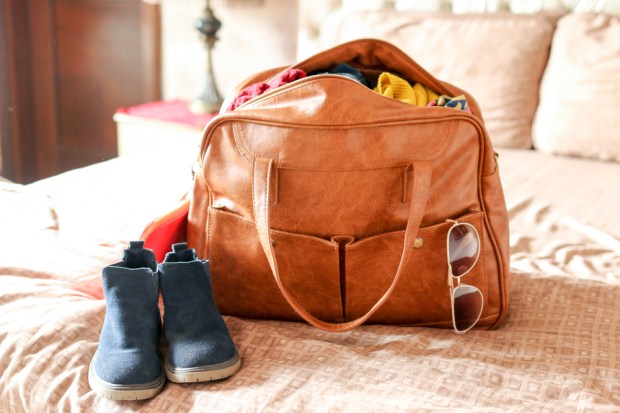Consumers Seek Backpacks And Duffel Bags As Alternatives To Handbags

Sales of women’s handbags dropped by 8 percent from 2016 to 2017, reaching $7 billion, while sales of backpacks and duffel bags have been on the uptick, Forbes reported.
From May 2017 to May 2018, men’s backpack sales dropped by 5 percent, and sales of children’s backpacks have fallen 15 percent. Sales of women’s backpacks, however, have been on the rise, increasing by 15 percent. In addition, sales of duffel bags were up 17 percent from February 2017 to February 2018.
In line with this trend, entrepreneurs have created new products. Dagne Dover, for instance, made a backpack that was designed to be an alternative to a handbag. BABOON’s first product is a duffel bag that acts as an overnight and weekend bag for women.
Technology is also making its way into the handbag and apparel market. Rebecca Minkoff’s handbags and the Rochambeau BRIGHT BMBR smart jacket are both powered by a partnership between Avery Dennison, a company specializing in apparel and footwear branding, labeling, radio-frequency identification and digital solutions, and IoT smart product platform EVRYTHNG.
The jacket and handbag can deliver special experiences, such as offers, coupons, vouchers, partner experiences, cross-sell and up-sell opportunities and loyalty benefits, which get pushed through to the user’s smartphone. For example, the Minkoff bag uses geolocation technology, so if it finds itself a block over from a fitness class that partners with the brand, it can push a voucher for the bag’s owner to go try out the class. The BRIGHT BMBR unlocks exclusive New York City experiences at restaurants, nightclubs and art and fashion destinations.
With the new handbag line, Rebecca Minkoff also launched the hashtag #AlwaysOn, which begs the question: Do consumers want to be always on? So that users don’t get notification fatigue, these products take more of a “let them come to us” approach. It’s possible to carry a Minkoff bag or wear a BRIGHT BMBR jacket and never have a connected experience. But, if the wearer wants it, the connected experience is there — and the more a customer uses it, the smarter it gets about targeting benefits.
